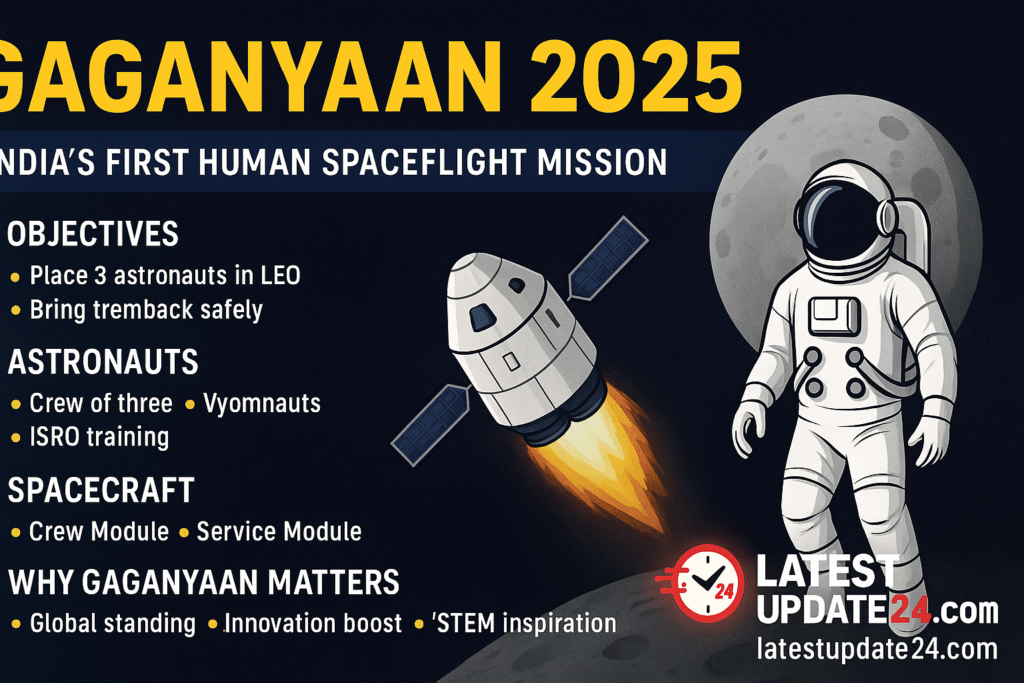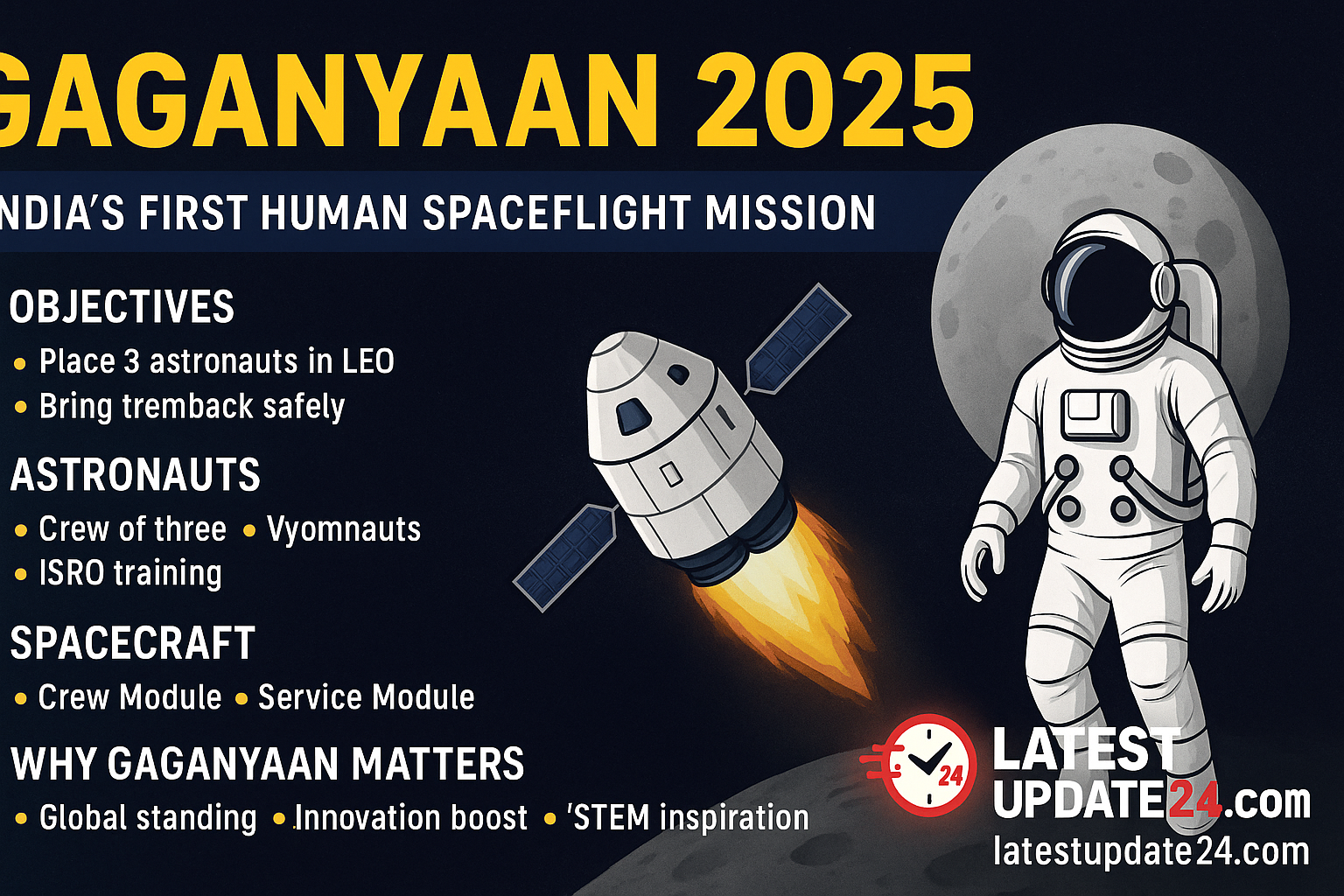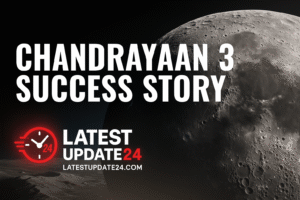🚀 India is set to make history in 2025 with its first-ever human spaceflight mission — Gaganyaan! In this post, we’ll break down everything you need to know: crew, rocket, launch date, ISRO’s vision, and more.

What is Gaganyaan Mission?
🧑🚀 Objective
🚀 Technology Involved
📅 Launch Timeline
👨🚀 Astronaut Training and Selection
🇮🇳 India’s Future in Space
What is Gaganyaan?
Gaganyaan is India’s maiden human spaceflight program initiated by ISRO. It aims to send a crew of three astronauts into Low Earth Orbit (LEO) for up to 3 days before returning them safely back to Earth.
This program is not just a technological achievement; it’s a powerful statement about India’s capabilities and ambition in space exploration.
Mission Timeline: When Will Gaganyaan Launch?
The Gaganyaan mission is scheduled for launch in 2025, following a series of critical uncrewed flight tests and safety validations.
Key phases:
-
2024: Second uncrewed test mission
-
Mid-2025: Final safety assessment
-
Late 2025: Crewed mission launch
These steps ensure the spacecraft, life support systems, and re-entry mechanisms are fully operational and safe.
Objectives of the Gaganyaan Mission
-
🚀 Place 3 astronauts in orbit (400 km altitude)
-
🛬 Ensure safe return via ocean splashdown
-
🧪 Test new technologies for future missions
-
🤝 Develop international collaborations in space research
-
🔧 Boost indigenous innovation in aviation and defense
Meet the Astronauts (Vyomnauts)
India has shortlisted four Indian Air Force pilots, who are undergoing rigorous training in Russia and at ISRO’s astronaut training facility near Bengaluru.
These future space travelers are being trained in:
-
Space medicine
-
Zero gravity handling
-
Life support systems
-
Emergency protocols
-
Physical endurance
Spacecraft Breakdown: What’s Inside Gaganyaan?
Gaganyaan will consist of two key modules:
🧑🚀 Crew Module (CM):
-
Height: 16.5 feet
-
Seats: 3 astronauts
-
Features: Life support, heat shield, safety systems
-
Role: Entry, re-entry, and astronaut habitat
⚙️ Service Module (SM):
-
Height: 9 feet
-
Role: Propulsion, power, and orbit control
-
Contains fuel tanks, batteries, and cooling systems
Together, they form the complete Orbital Module, launched via a modified GSLV Mk III rocket, renamed HLVM3.
Why Gaganyaan Matters
🌐 Global Standing: India becomes the 4th country (after the USA, Russia, and China) to send humans into space
💡 Innovation Boost: Advances in AI, robotics, communication, and avionics
💼 Job Creation: Growth in aerospace startups, defense R&D, and space infrastructure
📚 STEM Inspiration: A new generation of Indian students will dream of the stars
🔬 Scientific Research: Paves the way for microgravity experiments and long-term lunar missions
Budget and Funding
Gaganyaan is backed by a budget of ₹10,000 crore (~$1.5 billion USD) and fully supported by the Government of India under the Department of Space.
Challenges ISRO Faces
-
✅ Life support system testing
-
✅ Radiation shielding
-
✅ Re-entry capsule integrity
-
✅ Mission abort and rescue systems
Despite these, ISRO’s successful TV-D1 abort test in 2023 proves it’s well on track.
India’s Space Future: Beyond Gaganyaan
The Gaganyaan mission isn’t a one-off event — it’s a stepping stone to:
-
🔁 Reusable space vehicles
-
🛰️ India’s own space station (2030 goal)
-
🌑 Manned Moon mission (2040 vision)
-
🪐 Interplanetary crewed missions
Internal Links for SEO
Missed India’s historic moon landing? Read about Chandrayaan 3: India’s Moon Mission.










